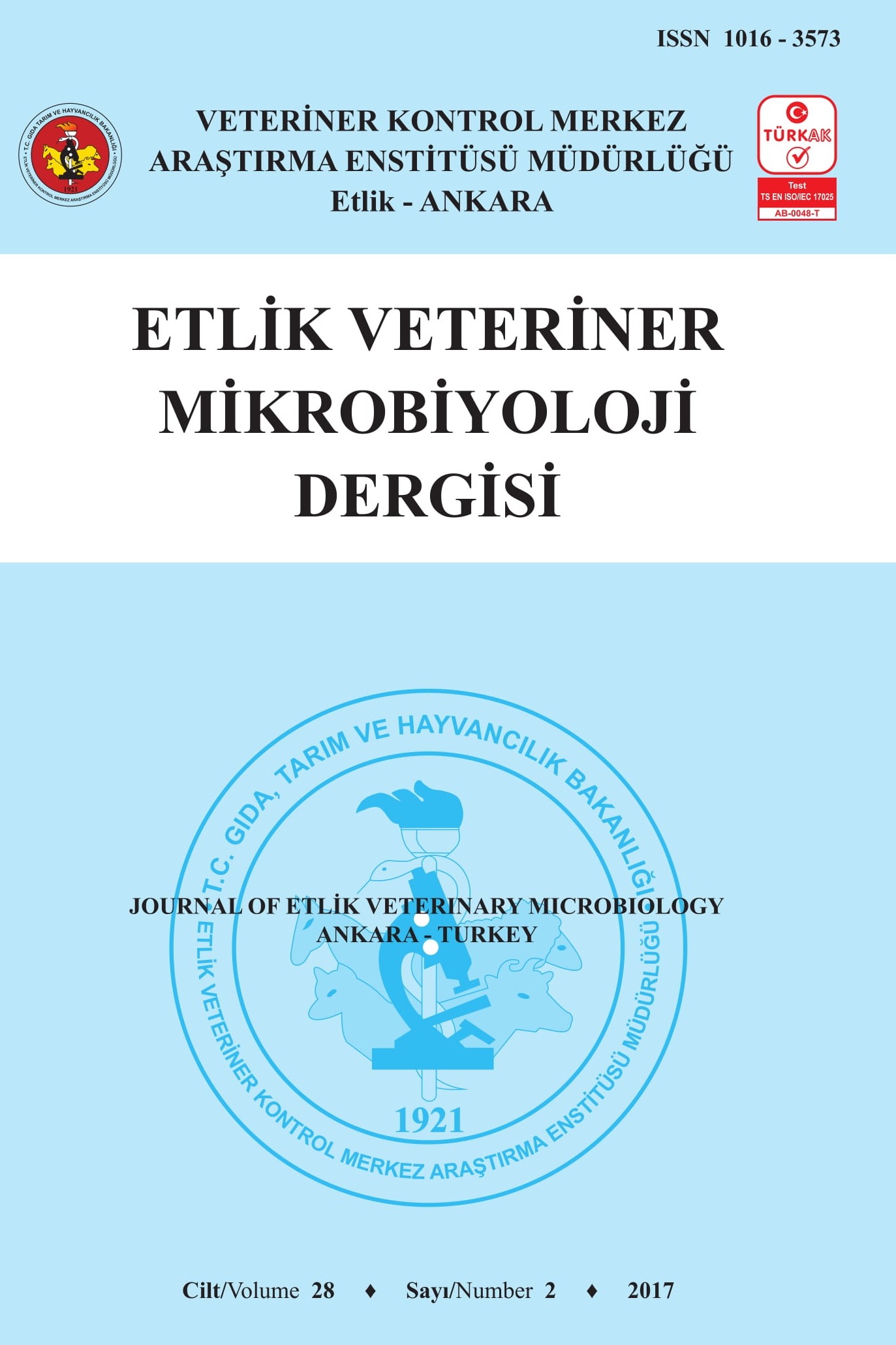
Etlik Veteriner Mikrobiyoloji Dergisi
Yazarlar: Mehmet Salih Sercan GÖKHAN, Özgül GÜLAYDIN
Konular:Veteriner Hekimlik
DOI:10.35864/evmd.691945
Anahtar Kelimeler:Antimicrobial susceptibility,Mastitis,Prevalance,Sheep
Özet: The aim of this study was to determine the prevalence and antimicrobial susceptibility of some bacterial agents causing mastitis in sheep in Van province. Identification of isolated agents at species level was performed by automated bacteria identification system and disc diffusion test was used to determine the antimicrobial susceptibility. In the study, bacterial agent was isolated from 51 (49.51%) of 103 milk samples, while no bacterial growth was in the rest of the samples. It was determined that Pseudomonas spp. (27.1%), Mannheimia haemolytica (16.94%), Staphylococcus spp. (13.55%) and Streptococcus pneumonia (11.86%) were mostly isolated, bacterial agents. In addition, 72.2%, 52.8%, 42.2%, 25%, 50%, and 50% of Gram-negative bacterial agents were resistant to penicillin, cefoxitin, tetracycline, co-trimaxozole, tilmicosin and erythromycin, respectively. Also, 21.7%, 43.4%, 8.7%, 8.7%, 8.7%, and 4.3% of Gram-positive bacterial agents were resistant to methicillin, cefoxitin, enrofloxacin, tilmicosin, erythromycin and gentamicin, respectively. In conclusion, it was observed that Pseudomonas spp. and Mannheimia haemolytica isolates could play an important role in mastitis cases in sheep as well as Gram-positive bacterial agents. Additionally, it was determined that the use of penicillin, cefoxitin, tetracycline, tilmicosin, and erythromycin should be considered in the treatment of mastitis in sheep in Van province.